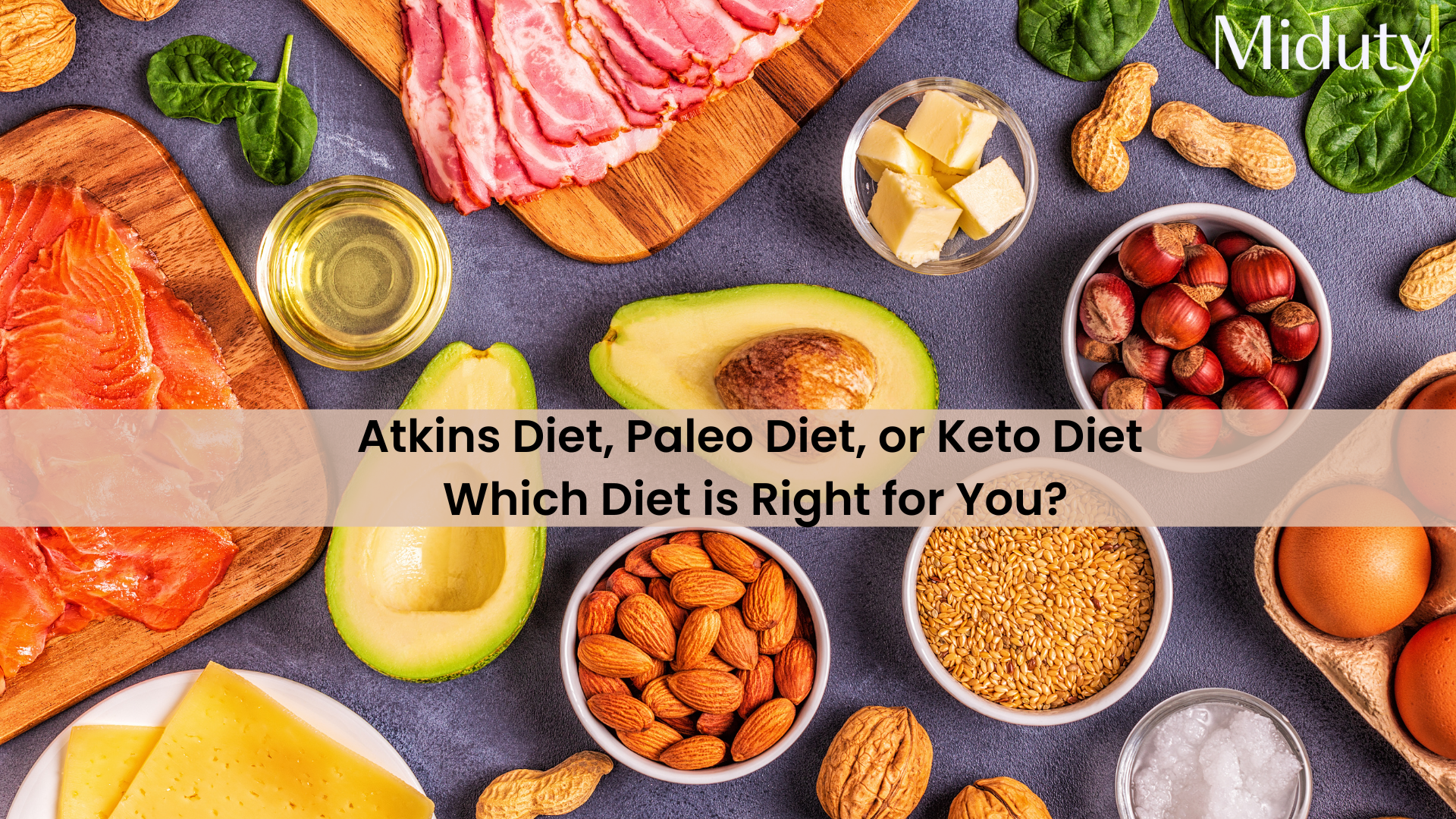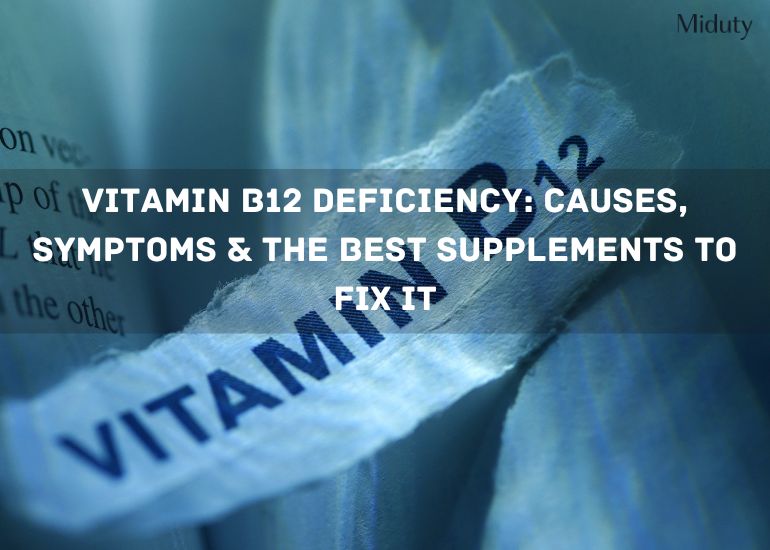
Atkins Diet, Paleo Diet, or Keto Diet: Which Diet is Right for You?
With the overwhelming variety of diets available today, it's easy to get lost in the details. Keto diet, Atkins diet, Paleo diet-which one will best suit your goals and lifestyle? Each of these diets has its pros, and each has its potential downsides, too.
Here's a look into what makes these diets unique, what risks you might encounter, and how to overcome those risks to make the most informed decision for your health.
The Atkins Diet
What is the Atkins Diet? Dr. Robert Atkins developed the Atkins diet, one of the original low-carb diets. This diet drastically reduces carbohydrate intake to help promote weight loss, and for many, it's been a successful way to lose weight and improve blood sugar levels. Atkins follows a specific process: starting with a phase of near-zero carbs to kickstart weight loss, then gradually reintroducing them while keeping portions controlled.
The Atkins diet limits carbs to control insulin, a hormone linked to obesity. By reducing carbohydrates, Atkins dieters can often manage blood sugar levels more effectively, making it particularly popular among people with insulin resistance.
However, the dark side of the Atkins diet lies in the reliance on low-carb, processed foods, like Atkins bars and shakes, which became a staple for many followers. These convenient foods offer a quick way to maintain low-carb intake, but they're often missing the dense nutrients that whole, unprocessed foods provide. Highly processed food items can lead to nutrient gaps and may affect heart health when consumed long-term. For a healthier Atkins approach, consider incorporating more whole foods like vegetables, lean meats, and healthy fats, even if that means spending a little extra time preparing meals.
Common Downsides of the Atkins Diet:
1. Processed Foods: Many Atkins followers turn to processed low-carb foods, but these can be lacking in fibre, essential vitamins, and minerals. While convenient, they aren't a substitute for fresh, whole foods.
2. Quality of Protein and Fats: As the Atkins diet limits carbs, people often increase their intake of protein and fats. Unfortunately, many tend to choose low-quality sources of these macronutrients, leading to potential rises in triglycerides and other markers of heart disease. High intake of certain processed meats can increase the risk of heart issues, so choosing high-quality, lean proteins and healthy fats is crucial.
3. Energy Levels: Not everyone feels energized on the Atkins diet. Because the diet's carbohydrate intake is low but not necessarily ketogenic, some may feel tired or weak. Without sufficient carbs for energy, your body may not adapt to burning fat efficiently, leaving you feeling fatigued.
The Paleo Diet
What is the Paleo Diet? Inspired by the diets of early hunter-gatherers, the Paleo diet emphasizes whole, unprocessed foods. It encourages eating like our ancestors by focusing on natural foods, such as meats, fish, fruits, vegetables, nuts, and seeds, while avoiding grains, dairy, and processed foods.
One advantage of the Paleo diet is its emphasis on "clean" eating, which can result in healthier eating habits and often weight loss. Because it cuts out most processed foods, the Paleo diet reduces the intake of added sugars, preservatives, and artificial ingredients. Many people on Paleo feel a boost in energy and often see improvements in their body composition.
However, the dark side of the Paleo diet comes with its heavy reliance on meat, particularly for protein. Not all meats are created equal, and many people struggle to access high-quality, hormone-free meats. Industrial farming practices mean that much of the meat available is treated with hormones or antibiotics, which can disrupt your body's hormonal balance over time. To avoid these downsides, seek out grass-fed or organic meats whenever possible.
Common Downsides of the Paleo Diet:
1. Quality of Meat: Paleo followers may eat a lot of meat, but factory-farmed meat often contains added hormones and other substances that can interfere with hormone health and may contribute to long-term health risks. Opt for organic or grass-fed meat whenever possible.

2. Excess Protein: Because the Paleo diet is high in protein, people who aren't highly active may be consuming more protein than their bodies can use. When protein intake exceeds what's needed, the body converts some of it to sugar, putting strain on the kidneys and making it harder to lose weight. This diet is most effective when combined with regular physical activity, especially strength training.
3. Carb Deficiency for Active People: The Paleo diet limits carbohydrates, which can be challenging for highly active individuals who rely on carbs for energy. If you're a regular at the gym or participate in endurance sports, this diet may need to be modified with more starchy vegetables or fruits for optimal performance.
The Keto Diet

What is the Keto Diet? The ketogenic diet (or "keto") is a high-fat, very low-carb diet designed to shift your body into a state of ketosis. In ketosis, your body burns fat for fuel instead of carbs, which can lead to rapid weight loss and improved energy levels. The Keto diet requires you to track your macronutrients closely, as even a small amount of excess carbs can push you out of ketosis. By focusing on fats and moderating protein intake, Keto diet followers often experience weight loss and sometimes improved mental clarity and sustained energy levels despite eating full-fat foods.
However, the dark side of the Keto diet includes challenges related to strict carb restrictions and potential nutrient deficiencies. Because the Keto diet excludes many foods, such as fruits, legumes, and certain vegetables, it's easy to develop nutrient gaps. Keto followers often need to supplement their diet with vitamins, electrolytes, and mineral-rich foods to avoid deficiencies. Furthermore, some people struggle with "Keto flu" symptoms, including headaches, fatigue, and nausea, during the initial stages of the diet.
Common Downsides of the Keto Diet:
1. Strict Monitoring Required: The Keto diet requires precise tracking of carbs to maintain ketosis. Even a slight deviation can reset the body's adaptation, leading to nausea, fatigue, and other "Keto flu" symptoms.
2. Potential Nutrient Deficiencies: Due to its restrictive nature, the Keto diet may lack important nutrients, particularly if vegetables and low-carb fruits aren't prioritized. Many Keto followers don't consume enough vegetables, which can lead to deficiencies in essential nutrients like potassium and magnesium.
3. Digestive Issues: Many Keto followers report issues with constipation, as the diet can be low in fibre. Increasing fibre intake from low-carb vegetables and staying hydrated can help address this.
Keto vs. Paleo vs. Atkins: Which Diet Is Right for You?
When it comes to Keto diet vs. Paleo diet vs. Atkins diet, each has its strengths and is suited to different lifestyles:
1. Atkins Diet: If you're looking for a low-carb diet with fewer restrictions on fat sources and minimal carb counting, the Atkins diet might be a good fit. It's ideal for those who want to reduce carbs without fully committing to the strict parameters of keto.
2. Paleo Diet: If you prefer a natural approach with whole, unprocessed foods and aren't keen on detailed macro tracking, the Paleo diet is an excellent option. This diet works well for those with active lifestyles who need a bit more flexibility in carbs.
3. Keto Diet: If your primary goal is rapid weight loss and you don't mind closely tracking your macros, the Keto diet could be a suitable choice. However, it's essential to prioritize high-quality fats and monitor for potential nutrient deficiencies.
Each of these diets has its pros and cons, and the best choice will depend on your goals, lifestyle, and level of commitment.
Check out what Miduty's Founder Eats in A Day
How to Recognize and Manage Nutrient Deficiencies on the Keto Diet
Nutrient deficiencies are common with restrictive diets, particularly on Keto. Here are some deficiency signs to watch for:
1. Heart Palpitations: Losing electrolytes, particularly potassium and magnesium, can cause heart palpitations. Adding leafy greens and low-carb yoghurt or kefir can help.
2. Muscle Cramps: Often caused by low magnesium or sodium. Including magnesium-rich vegetables and even a pinch of salt in meals can be beneficial.
3. Constipation: Low fibre intake is common on Keto. Including fibre-rich, low-carb vegetables, like spinach, can help regulate digestion and prevent constipation.
Conclusion
Whether you choose the Atkins diet, Paleo diet, or Keto diet, prioritize balance and quality. Eat nutrient-dense, whole foods, monitor your body's responses, and make adjustments based on how you feel and perform. Each diet can be effective if approached mindfully, so don't hesitate to customize your plan or seek advice from a nutrition expert.
Your health journey is unique, and there's no one-size-fits-all answer. Start by experimenting with what feels right for you, and remember that the best diet is the one that supports both your goals and your overall well-being.
Feel free to share your experiences, success stories, or any questions. Miduty is here to support your journey to a healthier, happier life!








